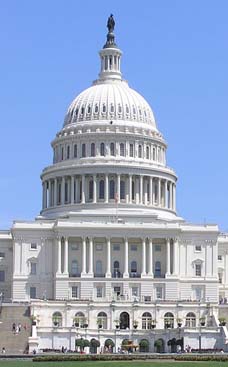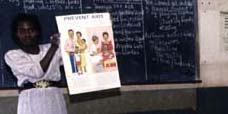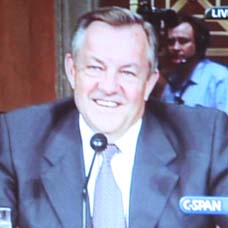2006.12.20: December 20, 2006: Headlines: Figures: COS - India: NGO's: Sierra Club: Environment: Energy: Mountain Mail: Carl Pope writes: Renewable energy offers new jobs
Peace Corps Online:
Directory:
India:
Special Report: India RPCV and Sierra Club Director Carl Pope:
February 9, 2005: Index: PCOL Exclusive: RPCV Carl Pope (India) :
2006.12.20: December 20, 2006: Headlines: Figures: COS - India: NGO's: Sierra Club: Environment: Energy: Mountain Mail: Carl Pope writes: Renewable energy offers new jobs
Carl Pope writes: Renewable energy offers new jobs
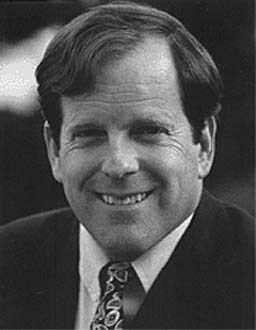
"The fact that we buy wind turbines from Denmark and not from Cleveland may be absurd, but it is no accident because until now America as a whole hasn't really been serious about creating a new energy economy. Meanwhile, actions by individual states give some clue about how forward-thinking energy policies can create good jobs. " Sierra Club President Carl Pope served as a Peace Corps Volunteer in India in the 1960's.
Carl Pope writes: Renewable energy offers new jobs
Renewable energy offers new jobs
Guest Opinion
by Carl Pope
Amid recent bouts with high gas prices, ongoing turmoil in the Middle East, and growing concern about global warming, there is now real consensus in America that reducing our dependence on oil should be among the nation's highest priorities. It turns out that a major commitment to clean energy technologies is also one of the best things we could do to revitalize the manufacturing sector in our country.
At the moment, America lacks any real plan for bringing smart energy solutions into the mainstream, and it's missing out on major job opportunities as a result. Consider the manufacturing of wind turbines as just one telling example. Iron ore mined in northern Minnesota gets shipped abroad to make steel. Danish, German, and Spanish companies then use that steel to make wind turbines.
These turbines are then shipped back to the United States on boats through the Great Lakes to Duluth, where they are placed on trucks and hauled to Iowa and other states with great wind resources. America provides the raw material and pays for the finished product but gets almost none of the economic benefit, foregoing increasingly dear manufacturing jobs. As if that isn't enough, NASA invented the technology itself.
Now imagine a different scenario. What if instead we took that same iron ore from Minnesota and shipped it to the Mittal Steel mill in Cleveland, the most efficient facility of its kind in North America. Because the mill is considerably smaller than it was at its peak, there is prime industrial land sitting unused around the facility.
There's no reason why a wind turbine factory couldn't be built right there on the premises, with its products rolling out across the wind-rich Midwest. American raw materials made into steel made into a finished product by well-paid American workers using American technology-creating jobs and clean energy for America.
The fact that we buy wind turbines from Denmark and not from Cleveland may be absurd, but it is no accident because until now America as a whole hasn't really been serious about creating a new energy economy. Meanwhile, actions by individual states give some clue about how forward-thinking energy policies can create good jobs.
Recently, Spanish wind power company Gamesa Energy decided to invest $34 million to produce towers and blades in Fairless Hills, Pennsylvania, after the state government all but guaranteed a market by requiring utilities to produce 18 percent of their power from renewable sources in the years to come. The facility will provide 530 good-paying union jobs in a community that has been desperate for a boost since U.S. Steel Corp closed its doors there in 2001.
Note that the Spanish company chose Pennsylvania over Minnesota, which despite its closer proximity to the wind-rich plains has no such renewable energy standard in place.
Earlier this year, Nanosolar, which has seed money from Google executives, announced that it would build the world's largest solar manufacturing facility near San Francisco, creating several hundred new jobs in the process.
It's no coincidence that California has set a goal of producing 20 percent of its energy from renewable sources, and that Governor Arnold Schwarzenegger has an ambitious initiative aimed at putting solar power on a million roofs in the Golden State in the next 10 years. The state also makes a point of investing its state pension funds in companies that push the green envelope.
America does not have a national plan that requires utilities to produce any power with renewable energy, but it could. And there's no reason why the United States couldn't decide to power 10 million homes with solar roofing. To be most effective, such policies ought to be matched with incentives and publicly assisted financing to get domestic manufacturers on their feet. In fact, there are many, many things this country could be doing to create a home-grown, renewable energy economy. It's been too busy giving subsidies to oil companies to do most of them.
It's time for America to put new energy solutions to work in ways that also put Americans to work. Unless our leaders actively work to create a market for the technologies of the future, they won't get the job, or the jobs done.
Carl Pope is executive director of the Sierra Club, the nation's oldest and largest grassroots environmental organization. Distributed by MinutemanMedia.org.
Links to Related Topics (Tags):
Headlines: December, 2006; RPCV Carl Pope (India); Figures; Peace Corps India; Directory of India RPCVs; Messages and Announcements for India RPCVs; NGO's; Environment; Energy
When this story was posted in December 2006, this was on the front page of PCOL:





Peace Corps Online The Independent News Forum serving Returned Peace Corps Volunteers
 | All Volunteers Safe in Fiji
All Volunteers in Fiji are safe and accounted for. The Peace Corps is monitoring the situation very closely. Volunteers are on standfast but there are no plans for evacuation at this time. Peace Corps is working closely with the US embassy and with host country partners to monitor the situation. Peace Corps is confident that volunteers are not in harm's way. The military seized control of Fiji on December 5 after weeks of threats. Subscribe to our news feed to read the latest breaking news. |
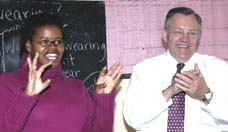 | Ron Tschetter in Morocco and Jordan
On his first official trip since being confirmed as Peace Corps Director, Ron Tschetter (shown at left with PCV Tia Tucker) is on a ten day trip to Morocco and Jordan. Traveling with his wife (Both are RPCVs.), Tschetter met with volunteers in Morocco working in environment, youth development, health, and small business development. He began his trip to Jordan by meeting with His Majesty King Abdullah II and Her Majesty Queen Rania Al Abdullah and discussed expanding the program there in the near future. |
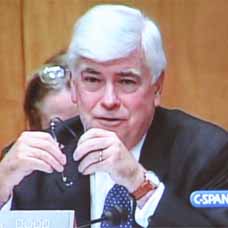 | Chris Dodd's Vision for the Peace Corps
Senator Chris Dodd (RPCV Dominican Republic) spoke at the ceremony for this year's Shriver Award and elaborated on issues he raised at Ron Tschetter's hearings. Dodd plans to introduce legislation that may include: setting aside a portion of Peace Corps' budget as seed money for demonstration projects and third goal activities (after adjusting the annual budget upward to accommodate the added expense), more volunteer input into Peace Corps operations, removing medical, healthcare and tax impediments that discourage older volunteers, providing more transparency in the medical screening and appeals process, a more comprehensive health safety net for recently-returned volunteers, and authorizing volunteers to accept, under certain circumstances, private donations to support their development projects. He plans to circulate draft legislation for review to members of the Peace Corps community and welcomes RPCV comments. |
 | He served with honor
One year ago, Staff Sgt. Robert J. Paul (RPCV Kenya) carried on an ongoing dialog on this website on the military and the peace corps and his role as a member of a Civil Affairs Team in Iraq and Afghanistan. We have just received a report that Sargeant Paul has been killed by a car bomb in Kabul. Words cannot express our feeling of loss for this tremendous injury to the entire RPCV community. Most of us didn't know him personally but we knew him from his words. Our thoughts go out to his family and friends. He was one of ours and he served with honor. |
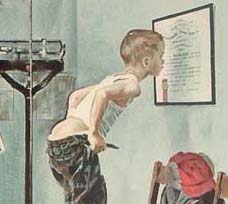 | Peace Corps' Screening and Medical Clearance
The purpose of Peace Corps' screening and medical clearance process is to ensure safe accommodation for applicants and minimize undue risk exposure for volunteers to allow PCVS to complete their service without compromising their entry health status. To further these goals, PCOL has obtained a copy of the Peace Corps Screening Guidelines Manual through the Freedom of Information Act (FOIA) and has posted it in the "Peace Corps Library." Applicants and Medical Professionals (especially those who have already served as volunteers) are urged to review the guidelines and leave their comments and suggestions. Then read the story of one RPCV's journey through medical screening and his suggestions for changes to the process. |
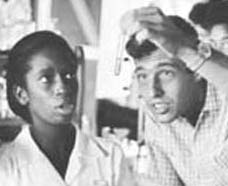 | The Peace Corps is "fashionable" again
The LA Times says that "the Peace Corps is booming again and "It's hard to know exactly what's behind the resurgence." PCOL Comment: Since the founding of the Peace Corps 45 years ago, Americans have answered Kennedy's call: "Ask not what your country can do for you--ask what you can do for your country. My fellow citizens of the world: ask not what America will do for you, but what together we can do for the freedom of man." Over 182,000 have served. Another 200,000 have applied and been unable to serve because of lack of Congressional funding. The Peace Corps has never gone out of fashion. It's Congress that hasn't been keeping pace. |
 | PCOL readership increases 100%
Monthly readership on "Peace Corps Online" has increased in the past twelve months to 350,000 visitors - over eleven thousand every day - a 100% increase since this time last year. Thanks again, RPCVs and Friends of the Peace Corps, for making PCOL your source of information for the Peace Corps community. And thanks for supporting the Peace Corps Library and History of the Peace Corps. Stay tuned, the best is yet to come. |
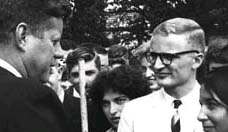 | History of the Peace Corps
PCOL is proud to announce that Phase One of the "History of the Peace Corps" is now available online. This installment includes over 5,000 pages of primary source documents from the archives of the Peace Corps including every issue of "Peace Corps News," "Peace Corps Times," "Peace Corps Volunteer," "Action Update," and every annual report of the Peace Corps to Congress since 1961. "Ask Not" is an ongoing project. Read how you can help. |
Read the stories and leave your comments.

Some postings on Peace Corps Online are provided to the individual members of this group without permission of the copyright owner for the non-profit purposes of criticism, comment, education, scholarship, and research under the "Fair Use" provisions of U.S. Government copyright laws and they may not be distributed further without permission of the copyright owner. Peace Corps Online does not vouch for the accuracy of the content of the postings, which is the sole responsibility of the copyright holder.
Story Source: Mountain Mail
This story has been posted in the following forums: : Headlines; Figures; COS - India; NGO's; Sierra Club; Environment; Energy
PCOL35651
18









